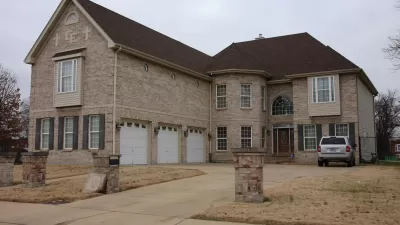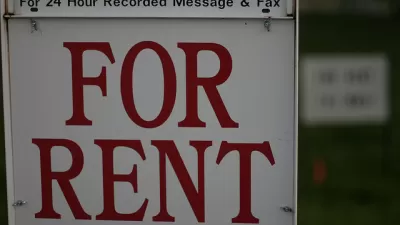Kathleen Madigan takes a look at new research that considers the shift in America's living situations, and what it means for consumer behavior.
With the recent collapse of the housing market on one hand and an ever-tighter rental market on the other, Americans are finding it increasingly difficult to keep a roof over their heads. Even so (or is it accordingly?), the majority of Americans still aspire to own their own home, according to a recent study by the Demand Institute, an arm of the U.S. Conference Board.
Entitled "The Shifting Nature of U.S. Housing Demand," the report suggests that the housing sector is ready to turn around – but that it won't be back to business as usual, even after prices pick back up.
"The first stage of this recovery will be led by rental properties," Madigan explains. "Past homeowners who lost their houses to foreclosure, young adults who are now living at home or who haven't saved a down payment, and new immigrants will drive the demand to lease rather than to buy."
"Homeownership isn't dead, however, argued Louise Keely, chief research officer at the Institute and one of the study's authors. It will simply be delayed, because consumers are still repairing their finances, and reconfigured, because big is no longer better in housing."
What's more, tenants and prospective homeowners are beginning to realize they can't afford to occupy such large spaces, even in the suburbs, where lower prices are offset by the cost of driving long distances. Smaller homes mean new spending habits, as consumers realize they don't have the room for a home gym or a storage room, and turn to businesses to fill the gap. "Almost every consumer-facing industry will feel this effect as consumers adapt," the report argued.
FULL STORY: Housing’s Future: Renting and Downsizing

Planetizen Federal Action Tracker
A weekly monitor of how Trump’s orders and actions are impacting planners and planning in America.

Restaurant Patios Were a Pandemic Win — Why Were They so Hard to Keep?
Social distancing requirements and changes in travel patterns prompted cities to pilot new uses for street and sidewalk space. Then it got complicated.

Map: Where Senate Republicans Want to Sell Your Public Lands
For public land advocates, the Senate Republicans’ proposal to sell millions of acres of public land in the West is “the biggest fight of their careers.”

Maui's Vacation Rental Debate Turns Ugly
Verbal attacks, misinformation campaigns and fistfights plague a high-stakes debate to convert thousands of vacation rentals into long-term housing.

San Francisco Suspends Traffic Calming Amidst Record Deaths
Citing “a challenging fiscal landscape,” the city will cease the program on the heels of 42 traffic deaths, including 24 pedestrians.

California Homeless Arrests, Citations Spike After Ruling
An investigation reveals that anti-homeless actions increased up to 500% after Grants Pass v. Johnson — even in cities claiming no policy change.
Urban Design for Planners 1: Software Tools
This six-course series explores essential urban design concepts using open source software and equips planners with the tools they need to participate fully in the urban design process.
Planning for Universal Design
Learn the tools for implementing Universal Design in planning regulations.
Heyer Gruel & Associates PA
JM Goldson LLC
Custer County Colorado
City of Camden Redevelopment Agency
City of Astoria
Transportation Research & Education Center (TREC) at Portland State University
Camden Redevelopment Agency
City of Claremont
Municipality of Princeton (NJ)





























